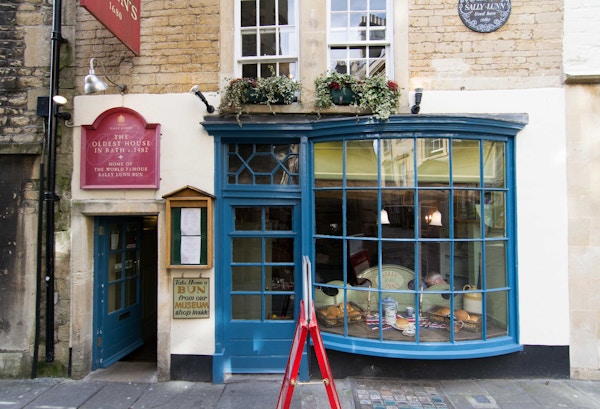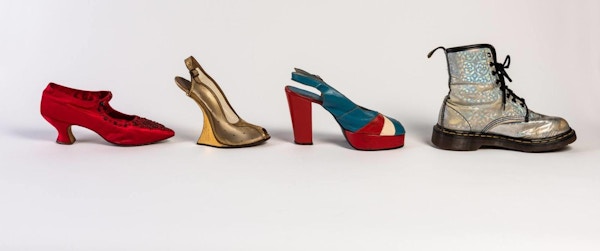These are the cultural bastions you must make time for on any visit to Bath.
The Jane Austen Centre
Jane Austen’s time in Bath began inauspiciously. On learning that she would be moving to the city with her parents, she recounted how she ‘fainted dead away.’ Little did she know that she would one day become its most famous resident with a centre dedicated to illuminating her life and the wider context of what it was like to live here in the Regency era. Visitors will doubtless rejoice in the classically appointed Georgian townhouse, which presents the impact Bath had on Austen’s writing, specifically within the pages of Northanger Abbey and Persuasion. Dress up in Regency costume and even take pictures with a wax work of Ms Austen herself. £12. Find more info here.
Roman Baths

The Romans knew a good thing when they saw it. They came to Bath to take its healing, restorative waters and, just as back in the motherland, they socialised around the ritual. Duly, then, they built what we now know as the Roman Baths in 70AD; to this day they remain one of the best-preserved Roman remains in the world. Each day,1,170,000 litres of steaming spring water, reaching 46°C, still fills the bathing site. Visitors can wander around the baths themselves, as well as around an interactive museum. An absolute must-see. £17.50. Find more info here.
Bath Abbey
Even amidst the considerable architectural glories of the city, the sight of Bath Abbey is still utterly breath-taking. Remaining very much a working church, there are usually queues around the block to wander through its hallowed vaulted atria held up by honey-stone columns and take in its glorious stained-glass windows. Look out for ladders of Angels on the west front, which was inspired by Bishop of Bath, Oliver King’s dream of ascending and descending angels. Catch a service to feel really uplifted. Free admission; donation suggested. Find more info here.
The American Museum & Gardens

The city of Bath and American history may not seem to be natural bedfellows. And yet it just so happens to be home to the only museum dedicated to American folk and decorative arts outside of the States. With memorabilia spanning the 14th- to the 20th-centuries, it has a reliably excellent roster of exhibitions on in addition to the permanent collection. Go for the inspiration to be found inside and out; on the latter front, the beautiful gardens have outstanding views over the Limpley Stoke Valley and demand to be picnicked in on balmy days. The perfect way to while away a sunny afternoon. £13. Find more info here.
The Holburne Museum
The Holburne Museum is housed within a resplendent Grade I-listed former hotel, the basis of its collections formed of the treasures amassed by Sir William Holburne (1793-1874), fifth baronet of Menstrie. Expect to see Renaissance treasures through to masterpieces by Gainsborough and do keep an eye on its ever-changing and often excellent exhibitions (on our last visit we saw a brilliant Grayson Perry exhibit – all without the hordes you get at The Royal Academy). £11; free for under 18s. Find more info here.
Sally Lunn Museum

No trip to Bath should ever conclude without sampling one of Sally Lunn’s famous buns (for the uninitiated, they are a kind of marriage between a teacake and bread, vaguely akin to brioche buns). This is best done at Sally Lunn’s Historic Eating House, a higgeldy-piggeldy affair arranged over several floors that you’ll likely have to queue for. If, however, you want to learn a little more about these satisfying baked goods, do nip downstairs to the micro museum housed underneath the tearoom. Aside from anything, it is Bath’s oldest house; Sally Lunn's original kitchen and bakery date from 1622 and it contains an oven dating, quite incredibly, to c.1100. Free to all those who have partaken of a bun upstairs (and why on earth wouldn’t you?). Find more info here.
Theatre Royal Bath

The joy of the Theatre Royal Bath is two-fold: first, it was built in 1805, which means that you will be sitting in the same auditorium as the fashionable set in Regency Bath once did. Second, it has a packed schedule of excellent shows, from opera to West End productions. If you’re visiting with children, its Egg theatre, which opened in 2005, offers performances every Saturday, with more scheduled in half terms and holidays. Find more info here.
The Fashion Museum

Every visitor to Bath should go to the Assembly Rooms, which are now owned by the National Trust. Completed in 1771, they were the place to be seen in fashionable Georgian England and the site of any elegant entertainment (dancing, card playing, taking tea) worth partaking in. These days, the lower ground floor houses The Fashion Museum, which showcases a sartorial history that stretches from Georgian gowns right through to contemporary designers. Its current Shoephoria! exhibit illustrates the evolution of shoe style over the last 300 years. No wonder Manolo likes it here. The Assembly Rooms offer free entry when not in use; The Fashion Museum charges £10 entry. Find more info here.
Toppings Bath
Got a rainy afternoon with time to kill in Bath? There is no better way to spend it that perusing the stacked shelves at Toppings, one of the very finest independent book shops we’ve ever had the pleasure of stumbling upon. It has been said that they’ll even make you a hot drink while you browse, though we’ve never had the temerity to ask. In short, heaven. Find more info here.
Cleveland Pools Bath
It might not be exactly culture. Neither is it exactly finished. But we applaud the stellar work that is going into restoring Cleveland Pools, the UK's only surviving Georgian Lido, and once it’s open, we can’t wait to come and marvel at its architectural beauty while dipping in the water. For now, though, we will just follow its progress via Instagram.
By Nancy Alsop
March 2022
Read More
The Best Of Suffolk
The Best Of Cultural Oxford
7 Cultural Places To Visit In Devon


